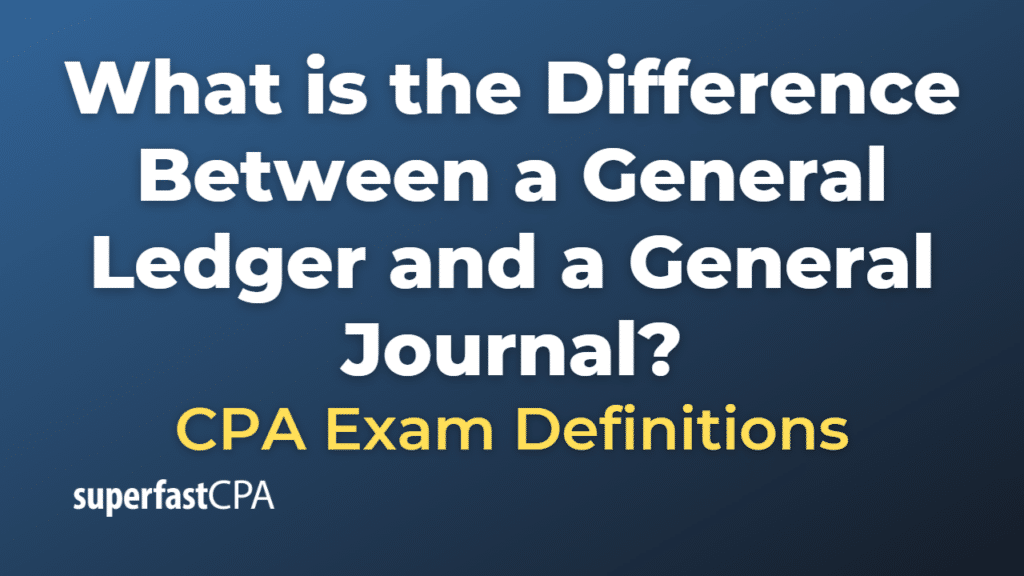Difference Between a General Ledger and a General Journal
The general ledger and the general journal are key elements of a company’s financial record-keeping system, serving different functions.
General Journal
The general journal, often simply called the journal, is a chronological record where all the company’s transactions are initially recorded. Each entry in the journal typically includes the date of the transaction, the accounts affected, the amounts to be debited or credited from each account, and a brief description of the transaction. This process is known as journalizing.
General Ledger
The general ledger, or ledger, is the primary accounting record of a company which is used to sort, store and summarize the company’s transactions. Unlike the journal’s chronological format, the ledger groups transactions by account.
For example, all transactions involving cash will be posted from the general journal to the cash account in the general ledger. Similarly, all transactions that involve sales revenue will be posted to the sales revenue account in the general ledger, and so on for every account.
Key Differences
- Purpose: The general journal is used for recording all the company’s transactions in chronological order, while the general ledger is used for sorting, storing, and summarizing these transactions by account.
- Structure: The general journal is organized chronologically, while the general ledger is organized by account.
- Level of Detail: Each entry in the general journal includes a detailed description of the transaction, while the general ledger typically contains less detail for individual transactions but provides a summary of all transactions for each account.
In a typical accounting cycle, transactions are first recorded in the general journal, then posted to the relevant accounts in the general ledger. Balances from the general ledger are then used to prepare the trial balance, financial statements, and other reports. This flow of information ensures that the company’s financial records are accurate, complete, and up-to-date.
Example of the Difference Between a General Ledger and a General Journal
Let’s use a simple example of a business transaction and see how it would be recorded in both the general journal and the general ledger.
Transaction: On May 1, 2023, a business buys $1,000 worth of inventory on credit.
General Journal Entry
Here’s how the transaction would be recorded in the general journal:
| Date | Account Title & Description | Debit ($) | Credit ($) |
|---|---|---|---|
| 2023-05-01 | Inventory | 1,000 | |
| Accounts Payable | 1,000 | ||
| To record inventory purchase on credit |
General Ledger Entry
After recording the transaction in the general journal, the business would post the transaction to the appropriate accounts in the general ledger:
- The Inventory account would increase (be debited) by $1,000.
- The Accounts Payable account would increase (be credited) by $1,000.
Here’s how the general ledger entries might look:
Inventory (Asset) Account
| Date | Description | Debit ($) | Credit ($) | Balance ($) |
|---|---|---|---|---|
| 2023-05-01 | Purchase | 1,000 | 1,000 |
Accounts Payable (Liability) Account
| Date | Description | Debit ($) | Credit ($) | Balance ($) |
|---|---|---|---|---|
| 2023-05-01 | Purchase | 1,000 | 1,000 |
This example illustrates how the same transaction is recorded first in the general journal and then posted to the general ledger. Note that the general ledger provides running balances for each account, making it easier to see the impact of transactions on each account.













